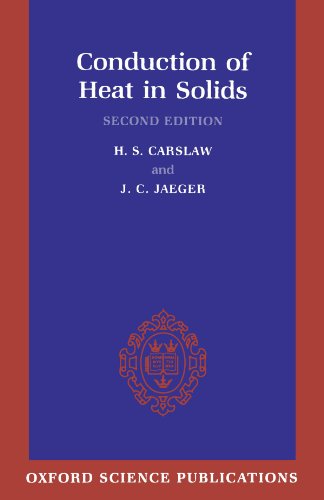Conduction of Heat in Solids ebook
Par jones madeleine le samedi, avril 30 2016, 18:07 - Lien permanent
Conduction of Heat in Solids by H. S. Carslaw, J. C. Jaeger


Download eBook
Conduction of Heat in Solids H. S. Carslaw, J. C. Jaeger ebook
Page: 517
Format: djvu
Publisher: Oxford University Press, USA
ISBN: 0198533683, 9780198533689
Houses lose a lot of heat through their windows even when they're shut. In general “heat transfer” can be considered to explain both the Mpemba and the Leidenfrost effect, and there are three modes of heat transfer. Conduction is the one of three types of heat transfer in which thermal energy transfers from one point to another through the interaction between the atoms or molecules of the matter. Any radiation which is absorbed turns into heat. These waves have different wave lengths depending on the temperature of the heat source. Conduction and Convection Conduction is most important in Solids. Thermal conductivity is a property derived in cases where conduction mode of heat transfer is studied and conduction of heat occurs through non flow motion of molecules example as solids where the molecules are not free to move. I don´t think it´s a good idea to model it as a continous solid because of the gap between the sand grains. This can be understood if we see how solids, liquids and gases are bound to their respective atoms or molecules. For conduction of heat, a material medium is necessary. Currently I should simulate the heat conduction through the pulverised materials (like sand) in CFX. We'll also introduce radiation, gravity and heat conduction in solids. Let's talk about heat – solids, liquids, and gases are made up of molecules. Here are quick definitions, how they apply to your attic, and how to fix them: 1. Conduction is essentially heat transfer through solids. Conduction occurs mostly in solids. There is a simple solution, but first let's learn a little about heat conduction: 1. Horatio Scott CarslawとJohn Conrad Jaegerによる共著 Conduction of Heat in Solids.